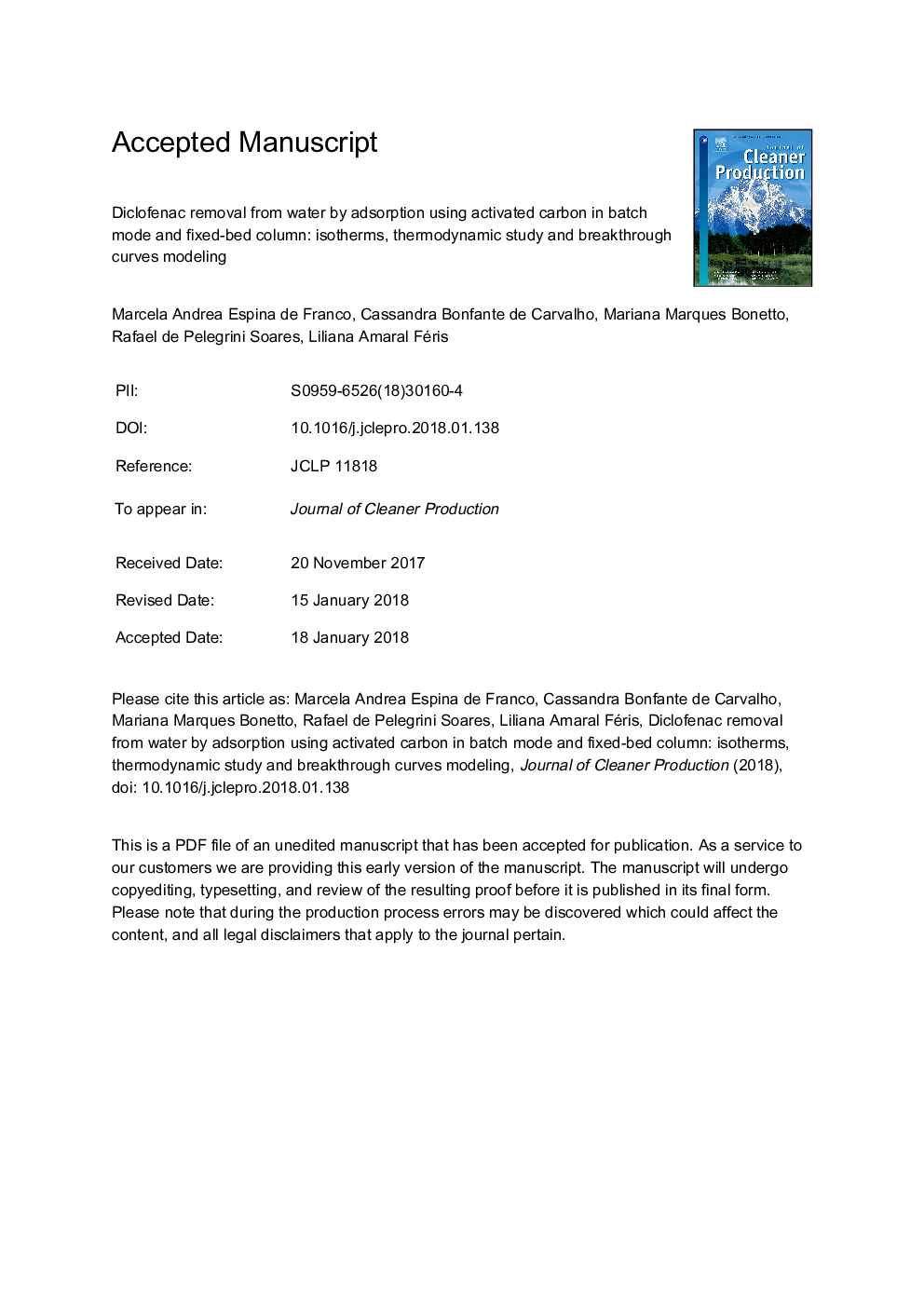| Article ID | Journal | Published Year | Pages | File Type |
|---|---|---|---|---|
| 8097589 | Journal of Cleaner Production | 2018 | 34 Pages |
Abstract
The presence of pharmaceutical compounds in the environment has been considered an emerging concern. Diclofenac has the highest acute toxicity among the non-steroidal anti-inflammatory drugs and it has been frequently detected in surface waters and wastewater treatment plants. Adsorption has been widely used to remove emerging contaminants such as pharmaceutical compounds from water sources and wastewaters. In this work, diclofenac adsorption was studied using activated carbon as adsorbent in batch process and fixed-bed column. Adsorption isotherms were determined through batch adsorption experiments, while fixed-bed adsorption was evaluated through a full factorial two-level experimental design involving three variables: initial pollutant concentration (20â¯-â¯100â¯mg L-1), weight of adsorbent (0.5â¯-â¯1.0â¯g) and volumetric feed flow rate (3â¯-â¯5â¯mL minâ1). Adsorption equilibrium was investigated in different temperatures revealed that the Freundlich equation is suitable to describe the isotherms behavior in 298, 308 and 318â¯K. Thermodynamic analysis revealed negative ÎG0 and both positive ÎH0 and ÎS0, which indicated that diclofenac adsorption onto activated carbon is higher at higher temperatures and it is a spontaneous process. Breakthrough time, the time when 5% of initial concentration is detected in the effluent, was at higher initial concentration and lower flow rate. Fractional bed utilization increased with the increase of the initial concentration and flow rate, but decreased with higher amount of activated carbon. Breakthrough curves experimental data were fitted using Thomas, Bohart-Adams and Yan analytical models. Yan model showed the highest average of the determination coefficients (R²â¯=â¯0.9842) of all experiments while the amounts adsorbed by the packed column were better predicted by Thomas equation.
Related Topics
Physical Sciences and Engineering
Energy
Renewable Energy, Sustainability and the Environment
Authors
Marcela Andrea Espina de Franco, Cassandra Bonfante de Carvalho, Mariana Marques Bonetto, Rafael de Pelegrini Soares, Liliana Amaral Féris,
